Nose aesthetic surgeries (rhinoplasty and septorhinoplasty) have become much more advanced in terms of aesthetics and functionality today. Nose aesthetic surgeries are no longer defined as only nose reduction surgery, but also include functional purposes such as correcting the shape of the nose and eliminating breathing problems.
Modern rhinoplasty operations are designed for many functional and aesthetic purposes such as correcting the shape of the nose, repositioning the nose tip and bridge, and widening the airways. Surgical interventions during surgery may vary according to the specific needs of each patient.
Therefore, patients who wish to undergo rhinoplasty should consult with a surgical specialist and discuss which procedures are most suitable for them. Post-surgery, patients will get a nice and well-breathing nose.
What is Protective Rhinoplasty?
Protective rhinoplasty is an important surgical technique for the safe and successful performance of rhinoplasty surgeries. Protective rhinoplasty helps prevent aesthetic and functional problems after surgery by protecting the nose muscles’ ligaments and the nose ridge’s anatomical structures.
Two important nasal ligaments, the Scroll ligament, and the Pitanguy ligament are among the ligaments that should be protected during rhinoplasty. The scroll ligament plays an important role in stabilizing and opening the nose’s inner nasal valve. In contrast, the Pitanguy ligament is very important for the aesthetic appearance of the nose tip.
In addition, the keystone area of the back of the nose is an area that should be handled with care during protective rhinoplasty. Since many different anatomical structures are combined in the keystone area, protecting this area during surgical intervention helps prevent aesthetic and functional problems after surgery.
What Kind of Aesthetic Gains Can Be Obtained With Rhinoplasty Surgery?
Through rhinoplasty surgery, many people can make their noses look smoother, more symmetrical, and aesthetically pleasing. With this procedure, problems such as the nose ridge’s curvature and the nose tip’s width are eliminated, while it is possible to make the nostrils narrower and smoother. In addition, reducing the width of the base of the nose and smoothing the tip of the nose is also possible through rhinoplasty. These aesthetic gains can increase the person’s safety and security, and help them to achieve a better appearance.
What improvements can be achieved in breathing after septorhinoplasty?
Septorhinoplasty surgery helps to solve respiratory problems by eliminating the disorders in the inner structure of the nose. Correction of the nose septum (nose internal structure) during surgery can prevent airway obstruction. In addition, it is possible to eliminate the hypertrophy (growth) of the concha in the nose or the problems in which the inner and outer covers of the nose prevent breathing. In this way, patients can breathe more easily and properly and get rid of respiratory problems. Post-operatively, patients may report improved breathing comfort, a comfortable sleep experience, and relief from respiratory problems.
What Should Be Considered Before Nose Surgery?
Many factors should be considered before nose surgery. Here are some important points that should be considered before nose surgery:
Evaluation of health status (Health assessment): You should consult a plastic surgeon to determine if you are suitable for nose surgery.
State your goals clearly: Before the surgery, you should clearly state your goals regarding your rhinoplasty. Your surgeon will provide you with the most suitable solutions and will take the necessary steps to fulfill your expectations.
Smoking and alcohol use: You should quit smoking and alcohol use before rhinoplasty. These substances may adversely affect the healing process of your body and may cause you to recover for a longer period in the postoperative period.
Medication use: Before the surgery, you should stop your blood thinners, or you should consult your surgeon.
Be prepared for the post-operative recovery period: Nose surgery, like any surgical procedure, requires a period of recovery. It is necessary to fulfill all the necessary steps in the post-operative process and to follow the doctor’s recommendations.
These points are important issues to be considered before nose surgery, and it makes your post-operative recovery process easy and fast.
Is the thickness of the skin important in rhinoplasty?
The thickness of the skin after rhinoplasty may affect the outcome of the surgery. Rhinoplasty candidates should speak honestly and openly with their doctors to achieve their post-operative expectations and the best outcomes. By evaluating the thickness of the skin and other characteristics of the nose, doctors can tell the potential outcomes before surgery. There is a possibility that very thick skin will cause longer-term swelling in rhinoplasty, but at the same time, thin skin can make permanent aesthetic results look more natural after surgery. Each nose has unique factors that must be evaluated before surgery, and doctors must accurately assess how the thickness of the skin will be affected by other features of the nose.
Can preoperative simulation and planning using computer imaging be helpful?
Preoperative simulation and planning are very important in rhinoplasty surgeries. Computer imaging provides a better understanding of patient and surgical goals. In this way, the patient and surgeon can get a clearer idea of their expectations, possible outcomes, and risks before surgery. In particular, rhinoplasty is a procedure in which the appearance of the nose can change drastically. Therefore, the patient and the surgeon must have the same opinion about the appearance of the nose after surgery. Computer imaging is one of the most effective tools used to achieve this consensus.
How long does rhinoplasty surgery take?
Rhinoplasty surgery can vary depending on many factors in estimating the time it takes to perform rhinoplasty. In some cases, rhinoplasty needs to be done in a single area, while in some cases more than one area may need to be changed. These conditions play an important role in accurately estimating the duration of surgery. Generally, rhinoplasty surgery takes 2,5-3 hours, and this period includes the preparation and recovery period for general anesthesia. However, this period may be longer in cases of septum deviation or previous surgery.

